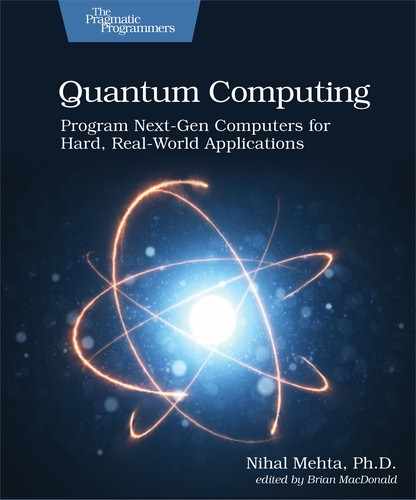Tell-Your-Boss Version: The “Key” Idea
Quantum cryptography is a topic where it’s easy to lose the plot with all the exchange of information taking place to transmit a single message. So before getting into the nitty-gritty details, you’ll look at the key insight that undergirds all of quantum cryptography. The intent is to get you to appreciate the quantum effects at play rather than making sure that all the auxiliary logic is properly connected up.
The central problem in cryptography is making sure that the sender and receiver have the necessary encryption and decryption keys before any message is communicated. With the keys in place, the sender encrypts the message and transmits it over a public channel, confident that only the receiver can decrypt it. Thus, we’ll focus on getting the keys across to the receiver: the Quantum Key Distribution (QKD) problem.
In classical cryptography, information is encrypted with a key and then sent along a public channel to the receiver. In quantum cryptography, information is also encrypted with a key, but what’s sent is a mega-qubit. To put it another way, instead of sending a single encrypted string, the mega-qubit contains, in effect, several encrypted strings. The following figure shows a mega-qubit carrying two such strings:

Should the mega-qubit fall into the wrong hands, the
thieves wouldn’t count themselves among the lucky few.
Despite the mega-qubit carrying the encrypted strings,
it’s virtually impossible to extract them. Because the
strings are in a superposition in the mega-qubit,
the only way to get anything out of a mega-qubit is to
collapse its qubits. But this is easier said than done.
In the mega-qubit shown in the previous figure, the first
qubit can collapse to ![]() or
or
![]() , the second to
, the second to ![]() ,
the third to
,
the third to ![]() or
or ![]() ,
and so on. Thus, for this example, the mega-qubit could
collapse to
,
and so on. Thus, for this example, the mega-qubit could
collapse to ![]() , or even
, or even
![]() or
or
![]() or any of the
or any of the
![]() other combinations. As the number
of bits in the binary string gets larger in any real-life
transaction, the chances that a random collapsing of the
mega-qubit results in the actual encryption key is virtually
nil. In other words, the quantum nature of the
mega-qubit means that the secret encryption key
is safe from any attempt to pry it out.
other combinations. As the number
of bits in the binary string gets larger in any real-life
transaction, the chances that a random collapsing of the
mega-qubit results in the actual encryption key is virtually
nil. In other words, the quantum nature of the
mega-qubit means that the secret encryption key
is safe from any attempt to pry it out.
Yet, the receiver needs to pull out the correct encryption key from the mega-qubit. Quantum cryptographic algorithms are a way for the sender and receiver to legitimately get around the inherent tamper-proof seal of the mega-qubit. They’re a carefully choreographed sequence of actions taken by both the sender and receiver so that the latter can recover the correct key, despite eavesdroppers on the public channels over which the sender and receiver communicate. In the next section, we’ll describe one such mechanism.
